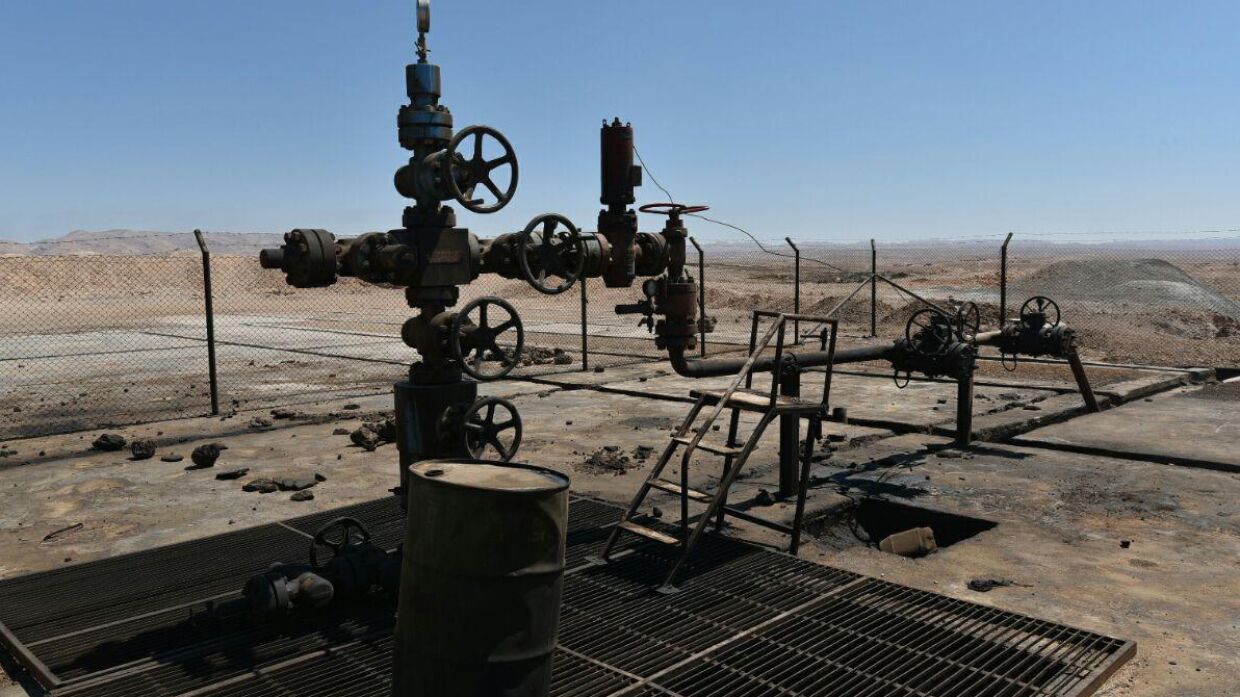Orphan oil and gas wells are idle wells with unknown or insolvent operators, according to the Interstate Oil and Gas Compact Commission (IOGCC). IOGCC data released in May 2020 show that there were nearly 57,000 documented orphan wells in 25 states as of 2018. Approximately 11% of those wells are in Texas.
State and federal government programs exist to fund orphan well plugging and abandonment activities, but the backlog of wells noted above puts the effectiveness of such programs into question. A new Texas-based organization has proposed shifting responsibility for plugging and abandoning orphan wells from government bureaucracies to the nonprofit sector.
“It’s important that Americans know our government has dropped the ball, but equally important for them to know they also have the power to take control of the situation and plug these orphaned wells now,” said Tom Slocum, vice president of oil and gas consulting firm Trifecta Solutions LLC and founder and board member of the new charitable organization Texas Well Protected Energy Foundation (TWPEF).
TWPEF, which is seeking 501c3 status with the U.S. Internal Revenue Service, will operate as a nonprofit focused on plugging and abandoning orphaned oil, gas, and water wells and promoting energy education. Slocum pointed out the organization’s mission is twofold: eliminate all orphaned wells and educate Americans about oil and gas.
“The public as well as oil and gas companies both need nonprofit organizations to step in and lend a hand where government has abdicated its responsibilities regarding the proper plugging and abandoning of orphaned wells,” Slocum said. “Energy education is essential in order for Americans to have a complete knowledge of where their energy comes from and what American energy independence means.”
Sarah Stogner, who practices law through her Midland, Texas-based firm Stogner Legal, PLLC and serves on TWPEF’s board, said the organization will help to show that the energy industry cares about the planet.
“Many landowners assumed responsibility to plug and abandon water wells on their property and are not financially able to do so,” she said. “TWPEF will work with Texas landowners to plug problem wells they’re legally and financially responsible for.”
Slocum and Stogner offered Rigzone additional insights about TWPEF’s vision for dealing with orphan wells. Keep reading for their perspectives.
Rigzone: Where do you see broad agreement on the issue of orphan wells?
Tom Slocum: All Americans want to live in a country without needless pollution or any active threats to our environment, including threats to our water aquifers, rivers, and oceans. Everyone can agree that the best way to address the issue of orphaned wells is to immediately come together as a community and begin plugging these wells and cleaning these wellsites now as opposed to waiting for our government to act, inevitably causing the wellbore to further deteriorate, increasing the overall environmental risk even further. Waiting longer for a massive, costly government program will only cause the total cost for remediation of these wellsites to increase as these orphaned wells continue to mechanically degrade. When nonprofits like TWPEF that specialize in plugging and abandoning orphaned wells are supported, immediate action to clean the environment can be taken.
Sarah Stogner: Everyone can agree that orphaned wells should be either recompleted into something productive – oil, gas, geothermal – but not everyone agrees who should pay the bill.
Rigzone: Briefly, what are the general orphan well policy proposals under consideration?
Slocum: There are many different policy proposals floating around the D.C. hallways. Most of these proposals include funding from the federal government to plug and abandon wells on federal lands only. Some of these proposals have strings attached to the funding where states must meet certain climate criteria first to be eligible, making it nearly impossible for many states to obtain funding to address the issues. Some proposals even go as far to eliminate all future mineral production from oil and gas on federal leases completely while others include opening 30 new government field offices to manage the plugging and abandonment.
Stogner: There are also state programs. For example, North Dakota used some of its Paycheck Protection Program (PPP) funds to put unemployed oil and gas workers back to work by paying to plug and abandon problematic wells in the state.
Rigzone: Which aspects of these proposals would likely win support from TWPEF members? Which aspects are concerning?
Stogner: There’s always going to be tension between state and federal power and money. We worry about wasting funds in the quagmire of government – let’s hire the best and brightest.
Slocum: There are not many positive aspects of the federal government deciding to institute a massive bureaucracy. Usually the taxpayers and consumers are the ones who lose due to the cost incurred when the federal government institutes costly programs that are notorious for overrunning budgets and inefficiencies. If the federal government would like to help nonprofits that are setup to plug orphaned wells, we feel like that might be a better option because these organizations are operated by people who are in the fields plugging wells everyday already. These organizations were specifically developed just for this very reason and can accomplish the work in an efficient and cost-advantageous manner due to the years of experience and practice in this space conducting these operations.
Rigzone: Please briefly explain the issue of bonding for orphaned wells, how it is supposed to work, and how it actually works.
Slocum: Bonding for an operator starts with the application to the agency responsible for enforcing regulations – in Texas it’s the Railroad Commission (RRC). An operator submits their application with proof of bonding to the commission, and that bonding amount is determined by the state according to the number of wells operated by the operator and can range from $25,000 to over $1 million depending on the physical location of the wellbores, whether they are on land or in water. Once the operator puts the necessary funding together at the bank for the total bond amount, the bank will issue a bond and hold onto that money so that in the event the operator goes bankrupt the state will have money to plug the wells.
Some people have a misconception that the RRC is the branch of government that takes possession of the bonding money from the bank in the event of a bankruptcy, and the RRC then should be immediately using that bonding money to go out and plug the wells. That misconception is simply not true. In reality, if an operator does go bankrupt, the RRC issues a notice to the state of Texas and the state takes the bonding money from the bank where the operator was holding it and deposits it in the state’s treasury – not into the RRC’s bank account. The RRC does not get the bonding money delivered to them as a result of the bankruptcy, meaning the bonding money is not tied to the wellbore.
State legislatures across America prefer this method because it empowers them with the funds instead of the agencies – and lets them decide how much money they will allocate to the agencies responsible for spending orphaned well bonding money and overseeing the plugging and abandonment of these orphaned wells. The state legislatures can give the agencies as little or as much as they want to when they approve their budgets. For example, in California the state passed a law that keeps the legislature from allocating more than $1 million of bonding money in any given year to plug orphaned wells on the orphaned well list. This is done on purpose so California can spend their oil and gas revenues as they wish.
Rigzone: What is the net effect of challenges associated with bonding and orphan well programs?
Slocum: The net effect of these current state policies enacted by our legislatures results in a backlog of orphaned wells in many states, a backlog these state governments are having a difficult time eliminating. These government-administered oil and gas regulatory agencies end up underfunded because their legislature actively chooses to spend funds on other projects or agencies. As a result, thousands of wells go unplugged and proponents of raising bonding point to these orphaned wells as a reason to raise bonding and taxes on oil companies.
Rigzone: How does TWPEF propose improving the system? Who would be the key participants in this revamped approach, and what would their roles be?
Slocum: TWPEF is setting out to raise funding from the community, including the oil and gas industry, to actively bypass the state legislatures and go directly to the landowners who are often living in poverty or in low-income situations on land that has been impacted by these orphaned wells. In many cases these people are indigenous to the state of Texas and are minorities. Oil and gas companies that have made financial dedications to the ESG (environmental, social, and governance) movement deserve a seat at the table to become the leaders of this important mission, providing much-needed relief to communities suffering the most from the lack of government action.
Oil and gas majors have the network required to introduce a massive public fundraising campaign, which is needed to fund this incredible multi-million-dollar undertaking, making it possible to achieve success and eliminate these orphaned wells. The best part about our initiative is that we will have different avenues for all companies and industries to participate in a modern-day public-private ESG campaign, and we look forward to working with everyone as we eliminate these orphaned wells together.
Rigzone: How would the TWPEF approach support oil and gas employment? What sort of jobs would it create?
Slocum: Every time TWPEF plugs a well and remediates a wellsite, it produces an opportunity to employ dozens, if not hundreds, of Americans working in the oil and gas industry – specifically from the service company sector, which has been impacted the most by the COVID downturn and the Russian vs. Saudi oil production disagreements which led to the market being oversupplied, crashing the price of crude to all-time historic lows. In some cases over 100 people must be utilized in order to properly plug and abandon a wellbore and remediate the land, which will pump a considerable amount of money back into our local economies at a time when the government and the workers need it the most.
These jobs may not be considered “green jobs” in some parts of the world as measured by others, but here in America when we clean the environment we consider it a green job. Increased plugging activity also increases manufacturing jobs here in America which support our service companies. As a “cherry on top,” more American jobs will be created outside of the wellsite plugging activity itself due to increased demand on the supply chain used in the service industry. Almost 100% of equipment used in the plugging and abandonment of wellbores is manufactured here in America.
Rigzone: From TWPEF’s perspective, how can state and federal government officials help to reduce the orphan well backlog? Conversely, how can they make the problem worse?
Slocum: State and federal governments can propose new legislation that ties the bonding money to orphaned wells and sends the bonding money directly to the agencies responsible for the plugging within one year of an operator declaring bankruptcy – a time period long enough to allow for resolution of any conflicts. If elected officials really want to make a difference in the environment and expedite the orphaned well plugging process, they can go ahead and start with implementing that simple change so the legislatures do not have the opportunity to keep kicking the can down the road.
If a state chooses to disregard their orphaned wells, it can lead to massive infrastructure problems like losing entire highways that are funded and paid for by the taxpayers – not to mention the risk associated with putting their freshwater sources in jeopardy. Ultimately the taxpayers bear a massive financial burden for the irresponsible actions of our government; but since most taxpayers and voters are uninformed about the process, the practice continues across the nation.
State and federal governments should do what they can to support nonprofits working to eliminate orphaned wells. These nonprofits are specifically designed to handle these orphaned wellbores now and can save the government millions of dollars by addressing these wellbores immediately – before further mechanical degradation takes place and the cost to plug them significantly increases.
















